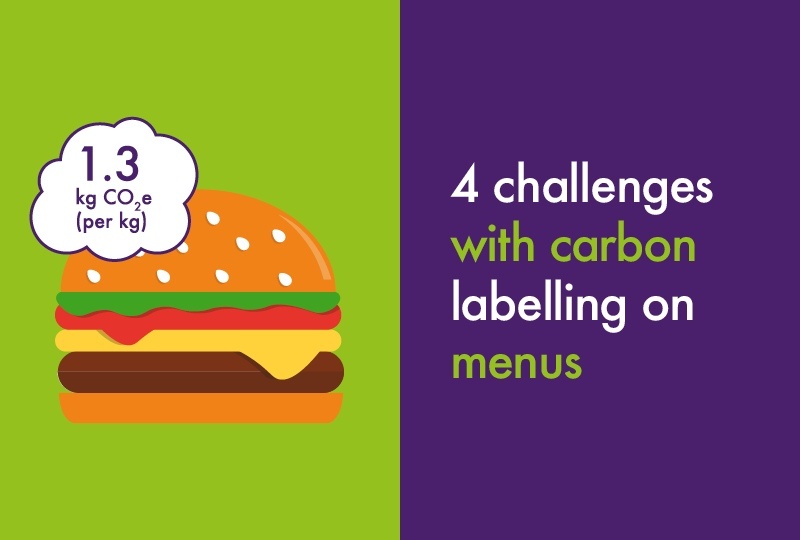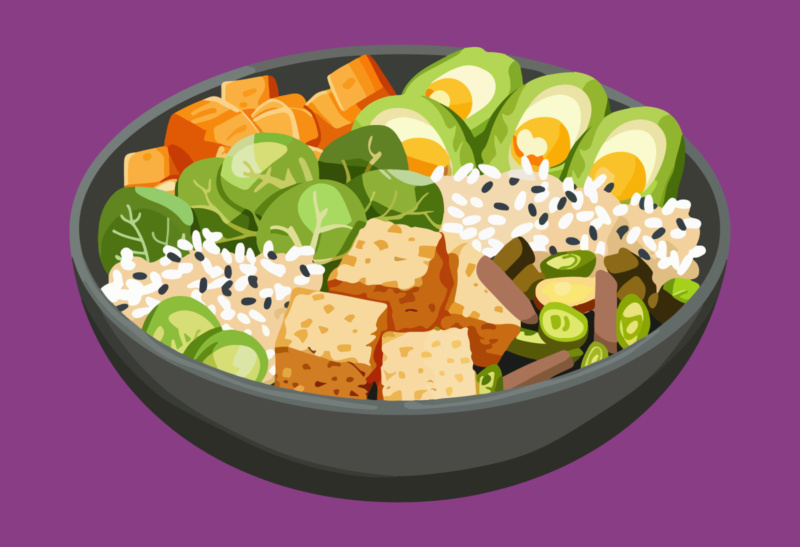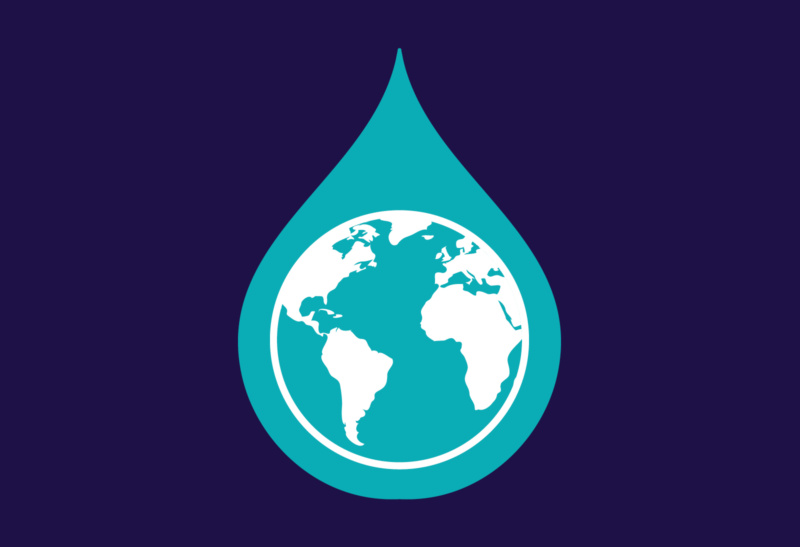Carbon labelling is a bit like that; we’re well accustomed to A-E energy ratings for electrical appliances, traffic light health ratings on food and allergen labels, but this relatively newcomer, carbon labelling, is starting to generate momentum in the food industry. It’s unregulated, not well-defined and poorly understood, but like many trends, it seems a good idea and is likely to catch on more widely. How long it will last, and how effective it will be, is also relatively unknown.
Carbon labelling sprang up in an attempt to bring more transparency to the climate impact of food production; it’s particularly popular with plant-based brands and products as it can be used to give an environmental competitive edge to products that have a low carbon impact. It seems to be overtaking the slightly dated concept of food miles as a key indicator of food sustainability, as awareness is growing that low miles don’t necessarily mean a low carbon footprint, especially if heated greenhouses are used.
It’s also increasingly understood that transport only represents 10% of the entire carbon footprint of food, so carbon labelling is an attempt to show the carbon impact of the entire product lifecycle, from farm to fork, as the majority of emissions are generated at the farm stage of production. Carbon labelling has been slow to catch on across wider brands and manufacturers, mainly because it’s notoriously difficult and data-intensive.
There are 4 main challenges with carbon labelling:
1. Its entire purpose is to enable climate-friendlier decision making, but it’s not regulated
… so you can’t know that you’re comparing like with like. For example, the biggest element of a can of baked beans’ carbon footprint is the aluminium can and whether it’s recycled or not, but some producers of products exclude waste from their carbon calculations.
We’re part of a WRAP working group on this, to drive standardisation for food and drink carbon measurement, so that there are industry standards for retail, foodservice, manufacturing, etc.
2. It’s not an indicator of nutrition
For example, conventional milk and dairy products are typically far more nutrient dense than their plant based equivalents.*
3. The carbon impact of food is only one aspect of its environmental footprint
For example, if you judge food by carbon impact alone, you might be persuaded that chicken is far better for the environment than beef, but recent headlines about the ecotoxicity of intensive chicken farming in Herefordshire show that it has had disastrous impacts on our rivers and ecosystems.
The danger of unintended negative consequences is the result of what’s known as ‘carbon tunnel vision’; food needs to be considered more in the round, and the visual on the right shows that there is far more to food sustainability than carbon impact alone. Indeed the Corporate Sustainability Reporting Directive states that a product can only be classed as ‘sustainable’ if it substantially contributes to one of the following objectives, without significantly harming the other five:
- Climate change mitigation
- Climate change adaptation
- The sustainable use and protection of water and marine resources
- The transition to a circular economy
- Pollution prevention and control
- The protection and restoration of biodiversity and ecosystems
4. Last but not least, the industry isn’t geared up for widespread carbon labelling
Unless a supplier has been an early adopter of carbon labelling (and typically these suppliers have a limited product range, with sustainability as a key USP, and able to do a full lifecycle analysis of their specific product and supply chain) then the industry is just not geared up with the data to be able to give the end consumer the carbon information that would enable us to distinguish between environmentally proactive suppliers and those that are inactive.
Current datasets are generally based on very generic global averages, indicating broad brush differences between different food groups, i.e. we all know that lentils are typically at the low extreme of carbon footprint, whilst red meats are at the highest extreme. This sort of generic data has been around for a while and has been used as a strong justification for the climate conscious consumer to move toward flexitarian, vegetarian or vegan diets. But this crude, generic data set only tells part of the picture. There’s a huge drive toward decreasing the emissions of food production and we ideally need to get to a place where a food buyer can distinguish between brands/suppliers and therefore shift demand to producers of lower impact foods, rewarding them for their environmental efforts.
In recognition of some of the factors above, the IGD (Institute of Grocery Distributors) is working on a consumer-facing environmental label that takes into account not only carbon impact but also land use, water use and water quality. This project has high levels of engagement within the food retail sector and aims at being really easy to understand; it has been piloted across a limited number of products and the working group is acting on research findings before determining next steps. Meanwhile, a company that specialises in carbon labelling of food has seen 23 organisations adding over 5,000 recipes to their platform in 2022 alone. So, momentum is gathering and the landscape is evolving.
In the meantime, Bidfood is looking at how we can better equip our customers with carbon information, because we recognise that despite its shortcomings, carbon labelling definitely has a role to play in the climate emergency and can be successful in nudging consumers toward climate friendlier choices.
We haven’t invested in this area yet, as we’re aware that any project would deliver little more than the generic data tables would already tell you. Currently our focus is on setting ambitious Scope 3 reduction targets (which will be publicised shortly) and engaging with our suppliers on decarbonisation across all categories supplied to us, rather than product specific measurement and reduction, as we feel that the onus has to be on reduction.
As part of this decarbonisation journey, we’ll be expecting our suppliers to track and reduce their carbon emissions, which will ultimately also help them measure carbon at product level too, so it all contributes to the overall picture of reducing the climate impact of the food we offer.
Read more about our sustainability vision here: Positive force for change | sustainability | Bidfood UK
Hungry for more? Check out our related blogs:
- How is Bidfood aiming to be a positive force for change?
- Journey to net zero – where do you start?
- What does Earth Day mean to Bidfood?
- How is Bidfood supporting apprenticeships?
- What I learnt about regenerative farming | Julie Owst
- How to master your sustainability communication online
- 3 reasons why we signed up to the Better Business Act coalition
*International Dairy Journal, Vol 87, Dec 2018



